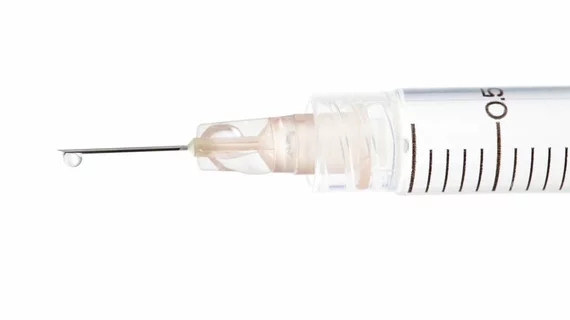Hormone therapy could elevate CVD risk in transgender individuals
Transgender men and women might face an increased risk of cardiovascular ills like MI, stroke and venous thromboembolic events (VTEs) as a result of hormone replacement therapy—an often key aspect of the transitioning process for trans individuals.
Nienke M. Nota, MD, and colleagues led the study that yielded those results, reviewing the medical records of 2,517 trans women and 1,358 trans men who visited Amsterdam University Medical Center’s gender clinic in the Netherlands between 1972 and 2015. Tens of thousands of person-years of data were scrutinized to determine whether patients who began transgender hormone therapy (THT) during that period experienced subsequent MI, VTEs or acute or spontaneous stroke (including ischemic and hemorrhagic strokes, transient ischemic attack and subarachnoid hemorrhage).
“Although transgender individuals hypothetically have an increased risk of cardiovascular events, there is little known about the occurrence of CV events in this population,” Nota and co-authors wrote in Circulation, where their work was published Feb. 18.
What we do know is that menopausal hormone therapy is losing popularity after a more than five-decades-long stint as a misconstrued cure-all to fix anything from menopausal discomfort to bone strength. Studies have identified a link between hormone therapy and coronary risk reduction, but handfuls of others have warned the treatment could raise women’s risk of MI, dementia and other chronic disease. In 2013, the U.S. Preventive Services Task Force recommended against the therapy.
But it might be a different story for younger people looking to transition, Nota and her team said. Trans women—individuals assigned a male sex at birth who self-identify as female—were prescribed THTs consisting mostly of estrogen, while trans men took testosterone. In the study, adolescents received puberty suppressors until they were 16, at which point THT was added to their regimen.
Nota et al. followed up with subjects for nearly a decade, ultimately finding that trans women had a higher adjusted incidence of both stroke and VTEs than men and women in a matched control population. Trans women also had more reported strokes (29) than reference women (12), and nearly twice as many strokes as men (29 versus 16).
There were five and 4.5 times as many deep-vein clots among trans women than there were among reference women and reference men, respectively, the authors reported. In addition, trans women saw 30 heart attacks compared to reference women’s 13—more than twice the risk.
Nota and her team said the higher incidence of cardiovascular events in trans individuals could be explained in part by the effect of THT on CV risk factors like lipid levels and smoking, which was prevalent in the study population (around 45 percent). They said that because of the study design they weren’t able to adjust for potential confounders like psychosocial stress, either, which is likely a large contributor to poor health outcomes in transgender populations.
“It is interesting to note that our results regarding trans women are in line with recent literature,” Nota and colleagues wrote. “Getahun et al. also found higher rates of strokes and VTEs in trans women relative to reference women and men, and of MIs relative to reference women.”
In a study published last July in the Annals of Internal Medicine, researchers further reported that trans women undergoing estrogen therapy saw 2.7 times and 1.5 times the odds of venous thromboembolism than cisgender men and women, respectively.
“Considering the limitations, we conclude that the incidences of strokes and VTEs are higher in trans women receiving THT than in both reference women and men,” the authors wrote. “Both physicians and transgender individuals should be aware of these risks, and risk factors should be adequately managed.”

